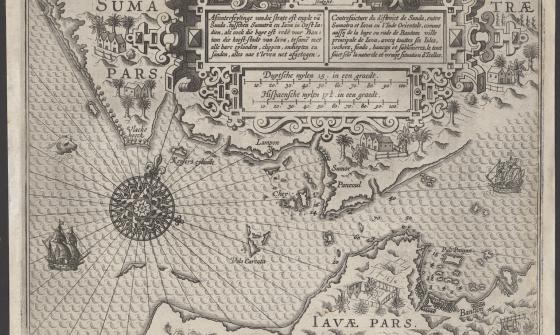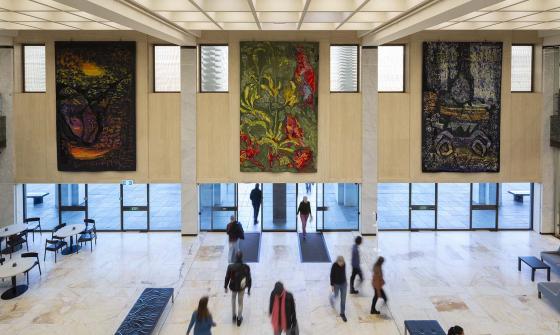Collection development policy
1. Purpose
The Collection Development Policy guides the continuing development of the National Library of Australia’s (the Library) collection, to ensure that collecting supports its mission to collect today what will be important tomorrow, to connect all of Australia’s peoples to the nation’s past, present and future.
2. Scope
This policy informs the public and Library staff of the types of materials the Library is seeking to collect, how these will be collected, and where collecting efforts are to be focused during 2025-2028. This policy is informed by, and should be read in conjunction with, the Library’s Collecting Strategy 2024-2028, which in turn aligns with the National Library Act 1960, Copyright Act 1968, the National Cultural Policy—Revive: a place for every story, a story for every place and the Library’s Indigenous Cultural and Intellectual Property protocol.
This policy applies to the acquisition phase of the collection’s lifecycle, for the purposes of developing a collection in line with the Collecting Strategy. As such it does not apply to collection management activities, including description, preservation, or rights and access management.
3. Policy statement
The Library enables Australians to understand their diverse social, cultural and intellectual histories by collecting and preserving Australian publications and unpublished collections in physical and digital formats. The Library does this so current and future generations can discover, learn and create new knowledge.
The Library seeks to actively engage with First Nations individuals, communities and organisations to help build relevant and well understood First Nations collections, ensuring that their knowledge, stories and voices in its collections are honoured, respected and accessible in culturally appropriate ways.
It also aims to build a rich collection of materials that enable learning, research and understanding of the Asia-Pacific region and Australia’s place in the world.
This policy operationalises the Library’s Collecting Strategy 2024-2028 and is supported by detailed Collecting Guidelines to further inform the decisions of the Library’s professional workforce.
3.1. What we collect
3.1.1. Legal Deposit
Under legal deposit provisions in the Copyright Act 1968, the Library comprehensively collects published Australian materials, encompassing:
- books and serials, including newspapers, journals and magazines
- federal, state and territory government publications including books, serials, websites, maps, ephemera and posters
- published music scores
- maps, namely cartographic and geospatial materials produced by private cartographic publishers and all levels of Australian government
- periodic harvests of the .au domain and online content identified as Australian.
3.1.2. Australian collecting
The Library collects Australian materials to represent the contribution of all Australians as the holders and creators of culture. These include but are not limited to:
- retrospective Australian works that were not acquired under legal deposit at time of publication.
- manuscripts – representative and primarily whole of life archives, comprising records ranging across all formats, assembled by an individual or organisation.
- oral history – representative, commissioned interviews, primarily in the audio format and usually whole of life, encompassing social history and folklore.
- pictures – formed and commissioned collecting across the range of picture formats, with a focus on social documentary and portraiture.
- ephemera – works that are transitory in nature produced to convey topical and timely information.
- web collecting – representative thematic or high priority websites, including influential issues and events-based content shaping Australian policy and society.
- social media – collected where available through web browsers or open APIs and using web archiving techniques and/or as component parts of personal archives, and operating in line with legal, privacy and commercial considerations or donor’s personal direction. The Library does not collect social media through proprietary mobile applications where content is presented in a dynamic, encrypted, and API-restricted environment.
3.1.3. Targeted international collecting
The Library aims to selectively build a collection of overseas resources to inform and enhance Australians’ understanding of the region and their place in the world. In addition, the Library provides access to publications that offer an understanding of global issues, current events and topics affecting Australia, and geographical regions where Australia has clear national, cultural, economic and strategic interests.
- The Pacific, Indonesia and China are focus areas for collecting across a broad range of formats. The Library collects contemporary published materials relating to social sciences, history, politics, culture and society. The Library collects materials from, and relating to, Pacific Nations with recognition of the enduring cultural ownership maintained by the materials’ creators and, complements New Zealand/Aotearoa and Hawaii’s well-established collecting programs with these nations.
- The wider world – materials are selectively collected or licensed to provide access to global information across a range of formats.
3.2. How we collect
The Library develops the collection through multiple mechanisms.
3.2.1. Legal deposit
Under Legal Deposit provisions in the Copyright Act 1968, the Library is entitled to receive one copy of all material published in Australia directly from the publisher, free of charge.
Where a print and electronic edition are available, the Library prefers deposits to be made electronically. This is done through the National edeposit service (NED). Where an electronic edition has not been published a physical deposit will be accepted. Only one format and one copy is required.
The Library works in close cooperation with Australian publishers, large and small, to assist them to meet these deposit obligations, operating the Pre-publication Data Service (PDS) and National edeposit services, as well as maintaining the Australian International Standard Serial Number (ISSN) and International Standard Music Number (ISMN) agencies.
3.2.2. Purchase
The Library has an annual budget with which it may purchase materials:
- directly from authors or publishers
- in consultation with First Australian communities or individuals with the authority to speak for traditional owners
- through licensing (including perpetual licences) and subscription arrangements with international and Australian suppliers of electronic materials and databases
- commissioning of oral history interviews and contemporary documentary photography, via contracted interviewers, collectors and photographers, and through occasional, externally funded partnerships
- on the open market through dealers, auction houses or by private treaty
- through library suppliers and agents in Australia and overseas.
3.2.3. Donations
The Library can accept donations of collection material through:
- voluntary deposit arrangements
- donations from the public, through one-off offers of materials and through public appeals, bequests, gifts and philanthropic donations under the Australian Government’s Cultural Gifts Program.
3.2.4. Web and social media harvesting
3.2.5. Special collecting arrangements, including through the Library’s office in Indonesia.
The National Library builds its collection within a broader cultural and heritage collecting eco-system and works collaboratively with other collecting institutions, and through its collecting contributes to a wider distributed national collection.
The Library does not collect all documentary materials, but aims to collect:
- comprehensively – for Australian published materials, based on the Legal Deposit provisions of the Copyright Act 1968.
- selectively for contemporary and retrospective materials:
- to represent the breadth and diversity of materials made available to the public in a variety of formats, including where it is not possible to acquire a copy of every publication. For example, while harvesting websites is enabled by the Copyright Act 1968, the Library does not collect all .au domain websites continuously but rather harvests the domain at set intervals.
- to support research and to enhance the depth and breadth of Library materials by acquiring collections assembled by others including the personal papers of people working across many sectors of society, organisational records, or collections focused on particular subject areas.
- to capture specific issues and events of national significance or to improve the representation of particular groups or communities in Australia. This collecting may be undertaken on a project basis, for example to capture the discourse around Federal elections or to enrich Australians’ understanding of the culturally and linguistically diverse nature of the Australian population.
- to develop a coherent and cohesive set of licenced electronic resources, both Australian and international, that support research. Resources are selected to support advanced research, both discipline-based and interdisciplinary, in-depth family history research as well as general users.
3.3. Collecting principles
The Library also takes a principles-based approach to developing the collection, where it aims to collect:
- materials created in Australia, by Australians, about Australia and about selected countries in the region, to share with a wide range of audiences, now and in the future
- The Library may choose not to collect where it is unable to preserve or maintain materials in a way that enables appropriate accessibility.
- in accordance with strategic priorities, with a clear focus on improving diversity and balance across the collection
- Applying identified strategic priorities allows the Library to collect with a sharper focus, guiding resource investment and facilitating effective delivery of legislated accountabilities and strategic mission.
- in physical and digital format, while striving to remain aware of and responsive to new and emerging formats
- The Library’s digital-first policy for most of its collecting focuses attention on content and seeks to facilitate wider access to materials while also managing long-term lifecycle costs.
- With Australia’s cultural, intellectual and social commentary increasingly being created in online social platforms, the Library is working within legal, privacy and technical barriers to collecting social media materials.
- The Library also recognises the emergence of artificial intelligence (AI) and will be transparent about AI’s contribution to its collections, wherever possible.
- ethically, legally, transparently and sustainably
- The Library exercises best possible ethical and professional practice and judgement in collecting cultural materials, including respect for the enduring rights of creators.
- The Library undertakes appropriate due diligence and is accountable and transparent in its acquisition of materials by legal deposit, purchase or donation. The Library complies with Commonwealth public governance, performance and accountability rules
- The Library ensures cultural materials have been legally exported from their country of origin and any intermediate countries. The Library does not acquire materials where there is suspicion they were obtained through unauthorised means. The Library reviews new information about an item in the institution’s collection and undertakes further investigations, if required.
- Collecting decisions also consider the environmental impact and lifecycle costs of the growing collection.
- without bias or prejudice
- As collectors of materials that reflect the lives and experiences of Australia’s diverse people, places and events, the Library collects everything in keeping with its priorities, without bias or prejudice.
- with an awareness of how the collection contributes to the collective story of Australia, held across other collecting and cultural institutions.
- Through targeted partnering and proactive collaboration with other collecting and cultural institutions the Library seeks to maximise the diversity and accessibility of Australia’s distributed national cultural collection.
4. Key roles and responsibilities
| Role | Responsibilities |
|---|---|
| Library Executive | Responsible for approving this policy. |
| Assistant Director-General, Collection Branch | As Policy Owner, responsible for coordination of development, implementation and review of this policy. |
| Directors, Curatorial and Collection Research | Responsible for implementation of this policy and using their expertise to inform collecting decisions. Responsible for the development of supporting guidelines that operationalise this policy. |
5. Review
This policy is to be reviewed no later than June 2028, under the direction of the Assistant Director-General, Collection.
6. Related policy documents and guidance
National Library of Australia – Strategic Vision 2025-2033
National Library of Australia – Corporate Plan 2024-2025
National Library of Australia – Collecting Strategy 2024-2028
National Library of Australia – Indigenous Cultural and Intellectual Property (ICIP) Protocol
National Library of Australia – Artificial Intelligence Framework
Australian Best Practice Guide to Collecting Cultural Material (2015)
ALIA Code of Ethics for the Australian Library and Information Services Workforce
7. Commonwealth resources and legislation
Public Governance, Performance and Accountability Act 2013
National Cultural Policy—Revive: a place for every story, a story for every place



